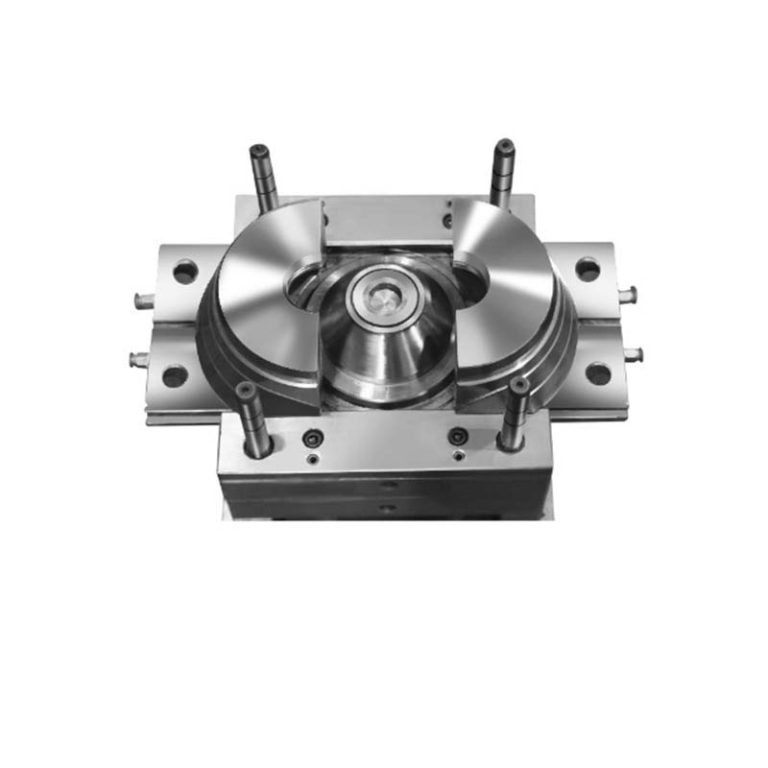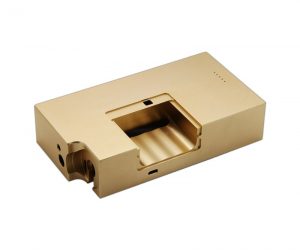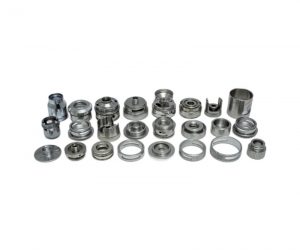The mold services industry is not merely a supporting player in the manufacturing ecosystem; it's a critical enabler of innovation and progress. Its future success hinges on the ability to navigate the complex interplay of technological advancements, geopolitical uncertainties, and evolving customer demands. Those who embrace adaptability, innovation, and strategic foresight will not only survive but thrive in this dynamic and increasingly unpredictable landscape.
Mold Services: A Crucible of Manufacturing Innovation
Molds, the often-overlooked architects of material reality, are fundamental to modern manufacturing. Their intricate geometries, demanding tolerances, and profound impact on product lifecycle costs necessitate a sophisticated understanding of the services that cradle their creation, deployment, and ultimate demise. This exploration delves into the complex ecosystem of mold services, revealing the intricate interplay of design, engineering, production, maintenance, and the emergent technologies reshaping this critical sector.
Beyond Ubiquity: The Strategic Imperative of Mold Mastery
The pervasive presence of molds in manufacturing belies their strategic significance. They are not merely tools; they are the embodiment of a manufacturer's competitive edge. The precision of a mold directly translates to product quality, influencing not only functionality and aesthetics but also influencing downstream processes, supply chain dynamics, and ultimately, market share. A suboptimal mold design can cascade into catastrophic consequences, from production bottlenecks and costly rework to compromised product integrity and reputational damage. Therefore, the selection and management of mold services are not peripheral considerations but rather core strategic imperatives.
Deconstructing Mold Services: A Multifaceted Ecosystem
The term "mold services" encompasses a far more intricate landscape than a cursory examination might suggest. It's a complex ecosystem comprised of specialized disciplines, each demanding a unique blend of expertise and technological prowess. This ecosystem includes:
- Design & Engineering: This phase transcends simple CAD modeling. It involves advanced simulation techniques, material science expertise to select optimal mold materials (considering thermal conductivity, wear resistance, and release properties), and a deep understanding of injection molding, casting, or other relevant manufacturing processes. The design must not only meet functional requirements but also anticipate potential failure modes and incorporate strategies for preventative maintenance.
- Production & Fabrication: The precision machining and assembly of molds require state-of-the-art equipment and highly skilled technicians. This phase involves complex processes, often incorporating advanced manufacturing techniques like EDM (Electrical Discharge Machining), laser ablation, and additive manufacturing for intricate mold features. Quality control at this stage is paramount, employing rigorous inspection methods to ensure dimensional accuracy and surface finish tolerances.
- Maintenance & Repair: Molds, even the most robust, are subject to wear and tear. Effective maintenance programs, incorporating predictive analytics and condition monitoring, are crucial to extending mold lifespan and preventing costly downtime. Repair services must be capable of handling a range of issues, from minor surface imperfections to major structural damage, often requiring specialized welding, coating, and refurbishment techniques.
The Evolving Landscape: Technological Disruptions and Future Trends
The mold services sector is undergoing a period of rapid transformation, driven by technological advancements. The integration of AI and machine learning is enabling predictive maintenance, optimizing mold designs, and accelerating production processes. Additive manufacturing is revolutionizing mold prototyping and the creation of complex geometries previously deemed impossible. Furthermore, the increasing demand for sustainable manufacturing practices is driving the adoption of eco-friendly mold materials and processes.
The future of mold services lies in the seamless integration of these technologies, creating a more agile, efficient, and sustainable manufacturing ecosystem. The mastery of mold services will continue to be a critical determinant of success in the increasingly competitive global marketplace.
The Algorithmic Alchemy of Mold Design: A Symphony of Form, Function, and Fractured Expectations
Mold design transcends the simplistic dichotomy of art and science; it's a complex, emergent phenomenon, a chaotic dance between meticulously calculated precision and the unpredictable ballet of material behavior. The true master mold designer isn't merely conversant in materials science, fluid dynamics, and the esoteric rituals of molding techniques – they possess an intuitive grasp of the subtle interplay between these disciplines, a preternatural ability to anticipate and mitigate the unforeseen. Their creations are not merely functional; they are artifacts of calculated risk, testaments to the elegance inherent in controlled chaos.
Precision Engineering: A Necessary, Yet Insufficient, Condition
The pursuit of engineering excellence in mold design is not a linear progression, but a recursive process of refinement, a relentless iteration towards an ideal that perpetually recedes. While advanced computational tools like CAD and FEA provide a framework for prediction, they cannot fully capture the stochastic nature of material response under stress. The true measure of engineering prowess lies not in the fidelity of the simulation, but in the designer's capacity to interpret its limitations, to anticipate the unmodeled, and to engineer resilience into the very fabric of the mold. This is not merely about meeting standards; it's about exceeding them, anticipating future demands, and preemptively addressing potential points of failure.
Bespoke Mold Development: Navigating the Labyrinth of Customization
The contemporary manufacturing landscape is a volatile ecosystem, a dynamic interplay of shifting market demands and technological advancements. The ability to create bespoke molds is not simply advantageous; it's a strategic imperative. The challenge lies not merely in fulfilling specific product requirements, production volumes, and material constraints, but in anticipating their evolution. The truly exceptional mold design and engineering services anticipate future needs, designing for adaptability and longevity, creating molds that are not just solutions to present problems, but platforms for future innovation. This necessitates a deep understanding of the client's business strategy, a predictive capability that transcends the immediate project scope.
From Conceptualization to Materialization: A Journey Through the Crucible
The transition from digital design to physical reality is not a mere translation; it's a transformative process, a crucible where the designer's vision is forged into tangible form. Mold manufacturing services leverage advanced techniques – CNC machining, EDM, precision grinding – not as isolated processes, but as orchestrated steps in a carefully choreographed sequence. The success of this process hinges not only on technical proficiency but also on a deep understanding of the inherent limitations and potential anomalies of each technique, a capacity to anticipate and mitigate the unpredictable interactions between them. The final product is not just a mold; it's a testament to the seamless integration of design, engineering, and manufacturing expertise – a harmonious convergence of disparate disciplines.
The Algorithmic Crucible: Unveiling the Esoteric Art of Mold Production
Mold production transcends mere fabrication; it's a complex interplay of material science, algorithmic precision, and predictive maintenance, a high-stakes dance between design intention and manufacturing reality. The seemingly mundane act of creating a mold becomes a crucible where cutting-edge technologies forge components vital to countless industries. Computer-aided design (CAD) and computer-aided manufacturing (CAM) are no longer mere tools; they are the nervous system of this process, orchestrating intricate toolpaths with sub-micron accuracy, a symphony of coordinated movements executed by robotic systems that defy human limitations. Advanced metrology, employing laser scanning and coordinate measuring machines (CMMs), ensures dimensional fidelity beyond the realm of traditional inspection, validating the mold's conformance to specifications with an almost unsettling precision. The slightest deviation, once a tolerable imperfection, now triggers algorithmic interventions, ensuring a quality control loop that is both relentless and adaptive.
Quality Assurance: Beyond Compliance, Towards Predictive Perfection
Quality assurance in mold production is not a passive checklist; it's a proactive, predictive endeavor. Dimensional inspection is augmented by advanced material analysis techniques – electron microscopy, X-ray diffraction, and spectroscopic analysis – revealing the microstructure of the mold material with unprecedented clarity. Functional testing, far from being a simple trial run, involves sophisticated simulation and modeling, predicting potential failure points and optimizing performance under extreme conditions. This predictive capability allows for preemptive adjustments, minimizing downtime and maximizing the mold's operational lifespan. The pursuit of quality transcends mere compliance with industry standards; it's a relentless quest for perfection, driven by the implementation of sophisticated quality management systems (QMS) and the relentless pursuit of industry certifications that signify a commitment to excellence that borders on obsession.
The Promethean Task of Mold Maintenance and Repair
Mold maintenance isn't simply about extending lifespan; it's about mitigating the unpredictable. Proactive maintenance strategies, fueled by data analytics derived from condition-based monitoring systems (CBMS), anticipate potential failures before they occur. These systems, employing sensors embedded within the mold itself, provide real-time feedback on temperature, pressure, and vibration, allowing for preemptive interventions that prevent catastrophic failures. The repair process itself is a testament to human ingenuity, a battle against entropy where specialists, wielding advanced welding techniques, laser resurfacing, and additive manufacturing, restore functionality to molds damaged by wear, tear, and the relentless forces of production. Each repair is a microcosm of the larger struggle to maintain operational efficiency in the face of unpredictable challenges.
Material Selection: A Symphony of Properties and Predictability
The choice of mold material is not a simple selection; it's a strategic decision with profound implications. The interplay of thermal conductivity, wear resistance, corrosion resistance, and the specific properties of the molded material creates a complex optimization problem. Mold service providers must possess a deep understanding of material science, leveraging computational modeling and simulation to predict material behavior under diverse operating conditions. The emergence of novel materials – advanced alloys, high-performance polymers, and ceramic matrix composites – pushes the boundaries of mold design, enabling the creation of components capable of withstanding increasingly demanding manufacturing processes.
Sustainability and the Circular Economy of Mold Production
The environmental impact of mold production is no longer an afterthought; it's an integral part of the design process. The shift towards a circular economy necessitates the use of recycled and recyclable materials, the development of biodegradable alternatives, and the implementation of closed-loop recycling systems. This commitment to sustainability is not merely a response to regulatory pressures; it's a strategic imperative, reflecting a growing awareness of the environmental responsibility inherent in manufacturing. The future of mold production lies not only in technological advancement but also in a profound commitment to environmental stewardship.
The Mold Services Metamorphosis: A Technological and Economic Disruption
The mold services industry is not merely undergoing a digital transformation; it's experiencing a profound metamorphosis, driven by converging technological advancements and shifting economic landscapes. This evolution transcends incremental improvements; it represents a fundamental restructuring of how molds are conceived, fabricated, and managed, impacting the very fabric of global manufacturing.
Beyond CAD/CAM: A Symphony of Algorithmic Precision
While the integration of CAD/CAM undeniably revolutionized mold design and manufacturing, its impact is now dwarfed by the emergent synergy between advanced algorithms, AI-driven simulation, and generative design. We are moving beyond the limitations of human intuition, entering a realm where algorithms autonomously optimize mold geometries for performance, manufacturability, and cost-effectiveness, pushing the boundaries of what's physically achievable. This isn't merely about faster design cycles; it's about unlocking previously inaccessible design spaces and achieving unprecedented levels of precision.
Additive Manufacturing's Fractal Expansion: From Prototypes to Production
Additive manufacturing is no longer a niche technology; it's rapidly becoming a mainstream force, challenging the very foundations of traditional mold making. Its impact extends beyond rapid prototyping. We are witnessing the emergence of hybrid manufacturing processes, seamlessly integrating additive and subtractive techniques to create molds with complex internal geometries and superior performance characteristics previously deemed impossible. This fractal expansion of additive capabilities is blurring the lines between prototyping and production, accelerating time-to-market and fostering unprecedented design freedom.
Predictive Analytics: A Prognostic Engine for Mold Longevity
The application of predictive analytics and machine learning to mold maintenance is not simply about preventative maintenance; it's about creating a prognostic engine capable of anticipating failures with remarkable accuracy. By integrating sensor data, advanced modeling techniques, and real-time performance monitoring, mold service providers are evolving from reactive fixers to proactive guardians of manufacturing efficiency. This data-driven approach minimizes downtime, optimizes maintenance schedules, and fundamentally alters the cost equation of mold ownership.
Navigating the Economic Labyrinth: Cost, Pricing, and Global Competition
The economics of mold services are far from static. The escalating complexity of mold design and manufacturing, coupled with the increasing demand for sophisticated predictive maintenance, necessitates a nuanced understanding of cost drivers and pricing strategies. The global market is a complex, fiercely competitive landscape, demanding agility, strategic partnerships, and a deep understanding of regional market dynamics. Success hinges not merely on technological prowess but on the ability to navigate this economic labyrinth with strategic foresight and operational excellence.
The Competitive Crucible: Forging a Future of Manufacturing Excellence
The mold services industry is no longer a peripheral player; it's a critical enabler of manufacturing competitiveness. The companies that thrive will be those that embrace the full spectrum of technological advancements, develop sophisticated data-driven strategies, and cultivate a deep understanding of the evolving needs of their clients. The future belongs to those who can seamlessly integrate cutting-edge technologies, optimize operational efficiency, and navigate the complexities of the global marketplace with strategic acumen and unwavering commitment to innovation.
The Mold Services Crucible: Navigating Success, Failure, and the Unfolding Future
The mold services industry, a seemingly prosaic sector, is in reality a high-stakes arena where innovation, resilience, and strategic foresight determine survival. This analysis delves into the complex interplay of successes, failures, and emerging trends shaping this critical component of the global manufacturing ecosystem. We move beyond simplistic case studies to examine the underlying systemic forces at play, revealing both the predictable and the profoundly unpredictable aspects of this dynamic field.
Beyond Best Practices: Deconstructing Success in Mold Services
While anecdotal evidence of "best practices" abounds, a truly insightful analysis requires a deeper examination of the underlying causal factors. Success in mold services isn't merely the result of adopting specific technologies or strategies; it's a complex emergent property arising from the intricate interplay of:
- Adaptive Capacity: The ability to rapidly respond to unforeseen material limitations, supply chain disruptions, and evolving client demands is paramount. This necessitates a flexible organizational structure and a culture of continuous learning and adaptation.
- Technological Foresight: Mere adoption of new technologies is insufficient. True success hinges on anticipating future technological trajectories and strategically integrating them into core operational processes. This requires a sophisticated understanding of both present and emerging technologies, coupled with the capacity for rapid technological assimilation.
- Strategic Partnerships: The most successful mold service providers cultivate deep, mutually beneficial relationships with key stakeholders across the manufacturing value chain. These partnerships provide access to critical information, resources, and market intelligence.
Navigating the Charybdis of Operational Challenges:
The challenges facing mold services providers are not simply isolated incidents; they represent systemic vulnerabilities that require proactive risk management strategies. These challenges extend beyond the obvious logistical and economic hurdles to encompass:
- Intellectual Property Protection: The inherent value of proprietary mold designs necessitates robust intellectual property protection strategies. This requires a deep understanding of patent law, trade secret protection, and contract negotiation.
- Talent Acquisition and Retention: The industry faces a persistent shortage of skilled labor. Attracting and retaining top talent requires competitive compensation packages, robust training programs, and a commitment to employee development.
- Geopolitical Volatility: Global supply chains are inherently vulnerable to geopolitical instability. Proactive risk mitigation strategies, including diversification of sourcing and robust contingency planning, are crucial.
Innovation as a Survival Imperative:
The relentless pursuit of innovation is not merely a competitive advantage; it's a survival imperative. The industry is witnessing a confluence of disruptive forces, including:
- Additive Manufacturing's Disruptive Potential: 3D printing technologies are fundamentally altering the landscape of mold design and manufacturing. Providers must not only adapt but actively leverage these technologies to gain a competitive edge.
- The Rise of Data-Driven Decision Making: The integration of sophisticated data analytics and predictive maintenance technologies is transforming operational efficiency and reducing downtime.
- Sustainability as a Competitive Differentiator: The growing emphasis on sustainable manufacturing practices is creating new opportunities for mold service providers who can offer eco-friendly materials and processes.
The Uncharted Territories of the Future:
Predicting the future of mold services is a complex undertaking, but several key trends are emerging:
- Hyper-Personalization: The demand for highly customized products is driving a need for greater flexibility and agility in mold design and manufacturing.
- The Internet of Things (IoT): Connected molds and smart factories will generate vast amounts of data, creating opportunities for enhanced monitoring, predictive maintenance, and optimized production processes.
- The Circular Economy: The increasing focus on circular economy principles will necessitate the development of innovative mold materials and processes that facilitate product reuse and recycling.


